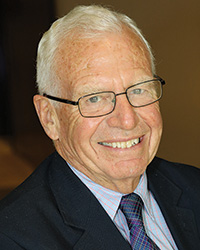
The Workout: Bifurcation and the portfolio - by David Kirk

The FED has reached a stabilizing level of economic activity, and will now be watching domestic micro as well as macro indicators for further action, including rate cutting, to achieve so-called soft landing. The FOMC has already implied that the March FOMC meeting will be too soon to expect the first rate cut and acknowledged that the downside rate risk is indeed in the discussions. The FED’s Beige Book report was issued January 24, 2024, compiled since the last report which was issued on November 29, 2023. The 12 Federal districts have reported broadly stabilizing economic activity and presents the anecdotal commentary which informs the FOMC rate decisions based on economic indicators aggregating national data. For commercial property, the outlook has marginally improved, and workouts are occurring without clear pattern.
Bifurcation is the buzz. Whether the hybrid employment or the weakened loan, the two-way is one way to deal with the workplace and work force and the loan and capital stack that supports the built environment. As stewards, we offer our constituencies a choice in the built environment and we are getting the job done!
The portfolio offers options, choices, priorities. The methodology for establishing priorities and balancing risks is idiosyncratic, individualistic and mediative. The rewards are improving as rates in the market improve and as capital sources multiply and accessibility improves.
The professional networks are working hard to share observations and patterns in the commercial property markets. The Counselors of Real Estate have launched the fourth Palooza series of topical zooms, 12 topics for 2024, on market conditions including, among others, property markets, capital markets, taxes, legal and insurance for its members. Major commercial real estate firms are offering online wrap-ups for 2023 and forecasts for 2024 with informed anecdotal context as well as aggregations. Other networks are sharing changing best practices and, increasingly, workout activity. The public sector is well represented on panels, as attendees, and as collateral resources. Memberships within the professional networks are broadly diversified by sector, profession and geography. The candor and detail and anecdotal content are all robust. The built environment is highly dependent on cooperative efforts from a variety of stakeholders. And they are at the table. Public information is the platform. Pro-forma solutions carefully curated and utilized.
So bifurcation is imagined and negotiated. Like the FED’s ongoing commentary, the stakeholders are feeling their way toward the resolution of conflicts between the parties. Much to be done. Stewards of the built environment must balance risks to maintain the assets, upgrade, and market for constituents. All are on a deal-by-deal basis. Often with portfolio considerations. The commonality is clarified by engagement and careful planning, and with demonstrative action. Performance is essential to goals. And yes, the portfolio matters. All parties have portfolio considerations, even though some portfolios are limited.
David Kirk is founder, chief executive officer of Kirk & Co., Boston, Mass.